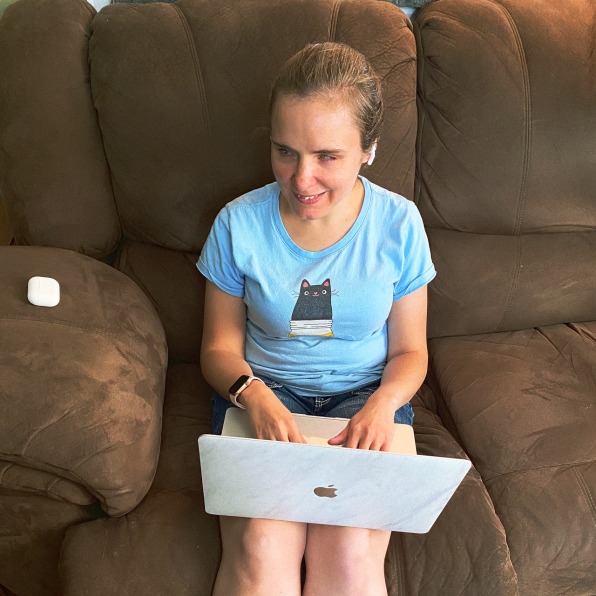Kristy Viers is here to show the world how you use a phone when you cannot see.
Kristy Viers owned an iPhone for five years before her tech-savvy boyfriend showed her a trick: Instead of thumb typing on the screen’s tiny lettered keyboard, she could flip around her phone, and type with the six dots of braille that appeared directly under her fingers. The difference was night and day. Text messages that took her minutes to compose now took seconds.
Given that Viers is blind, it might be surprising that it took her so long to learn her iPhone had a trick built specifically for her. But the truth about technology, even accessible technology, is that it’s not always so accessible to everyday users.

In the past few years, accessibility has become an important mission to the tech industry. This is in part good business—companies want to serve as many revenue-generating customers as possible. It’s also partly to meet regulations, as the Americans with Disabilities Act (1990) and GDPR (2018) both mandate digital accessibility. But there’s still a lot of work to be done, and the public response to Viers’s early work has shown that.
Her first clip, ported to her Twitter account, was liked 440,000 times and shared over 150,000 times. Developers have chimed in in the comments, thanking Viers for the demonstrations, and even requesting that she demo certain accessibility features. Because as Viers points out, it’s one thing for developers to read technical documentation about building an app for visual impairment, and it’s a whole other thing to actually witness a blind person putting that technology to work. The videos offer an informal education for developers and designers alike.
Viers, who has a degree in psychology, got the idea for her videos from the conversations she was having in her everyday life. They’re filmed by her boyfriend, and uploaded as a single, unedited take.
“Some of my friends, even my close friends and family, would ask me questions about my phone and technology. How I use it, and how much I can use it,” says Viers. “One of my friends was asking, ‘Can I send you links to pages? Can you read them and respond to them?’ I said, ‘Yes, my phone can do almost anything! It reads pretty much whatever is on the screen!’
“It got me thinking, if they don’t know without me pulling out my phone—people who interact with me a lot—it probably means tons of people around the world probably don’t know,” Viers says. So she launched her channel, in hopes of both educating the sighted community as to how people with vision impairments use technology, and educating people with vision impairment on how they might use their tech more easily and effectively.
In future videos, Viers plans to dig deeper into apps and websites to demonstrate accessibility features, while highlighting where they sometimes fall short. “It’s not to shame anyone, but it’s to show that some things might need a little bit of work,” Viers says. “I don’t like to be ugly about it, but I do think it’s nice to spread awareness.” She has also teased on Twitter that she recently purchased a Roomba, and plans to put that through the paces, too.
As for going five years without knowing about the handy braille keyboard on her phone, Viers, a bubbly optimist, isn’t deterred. “I’m still super ecstatic about it now!” she laughs.
